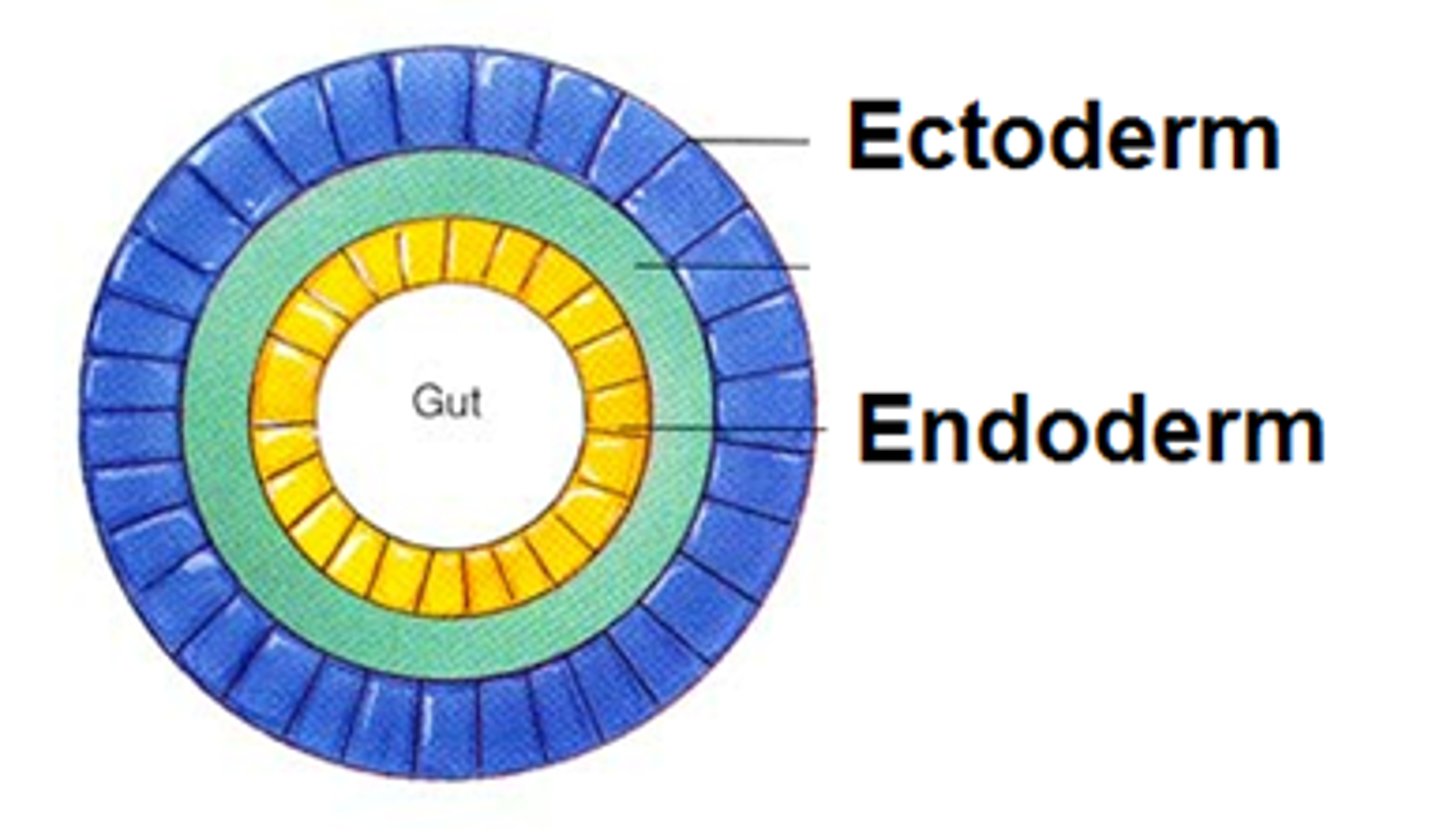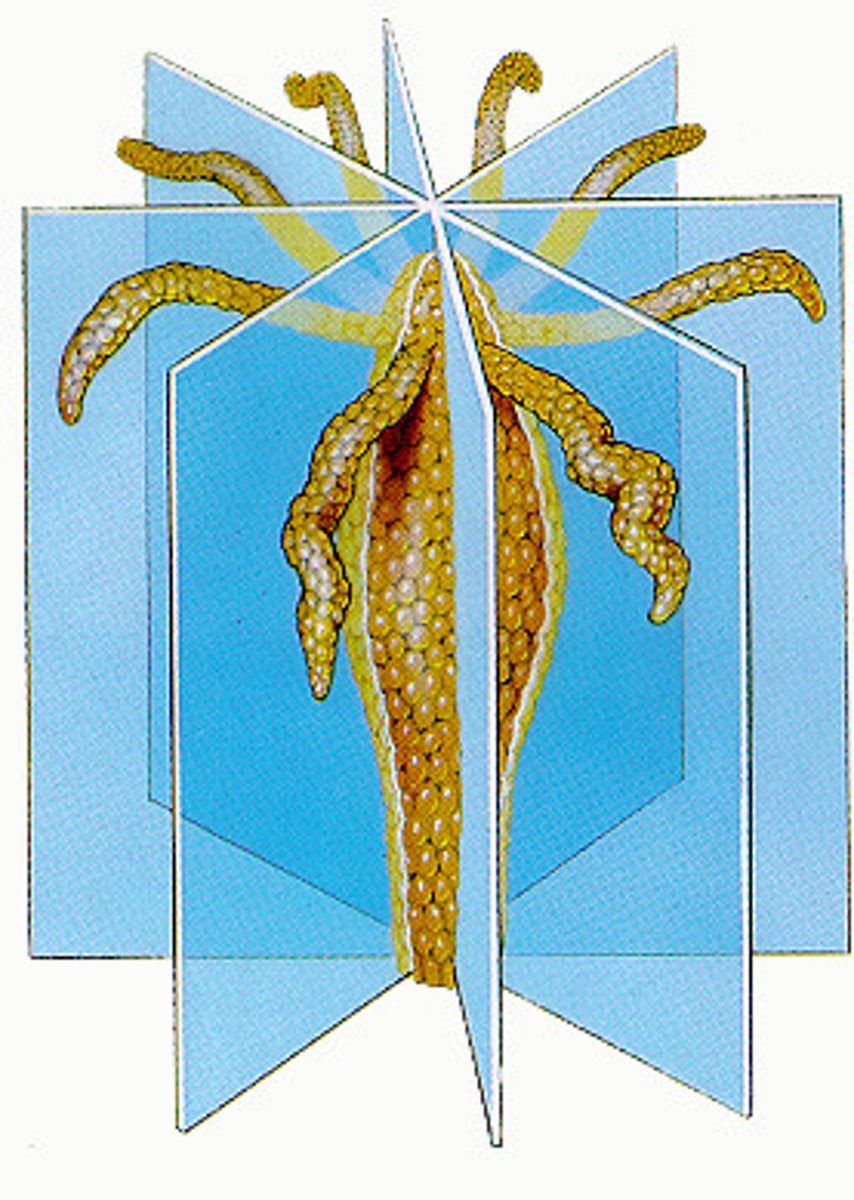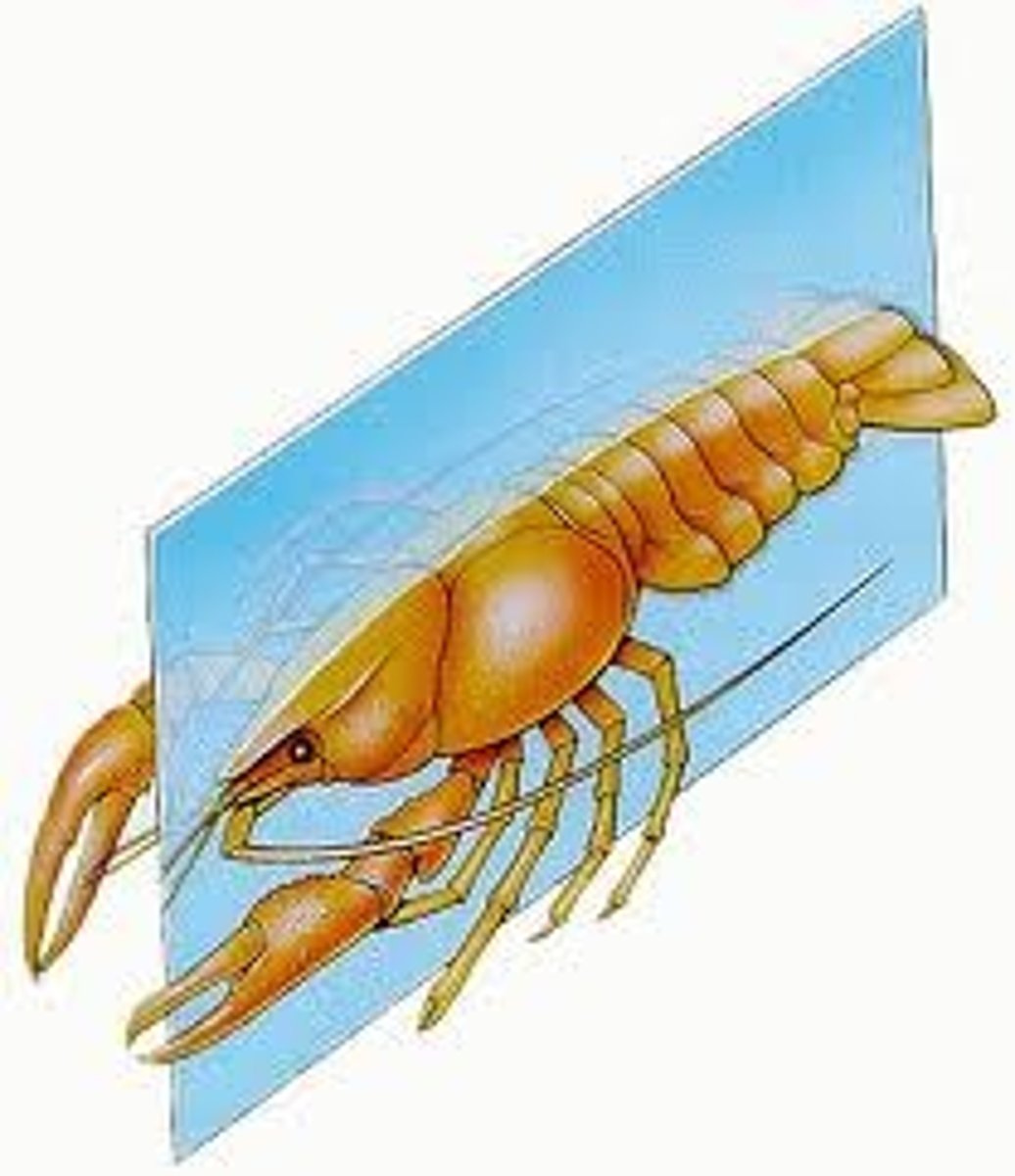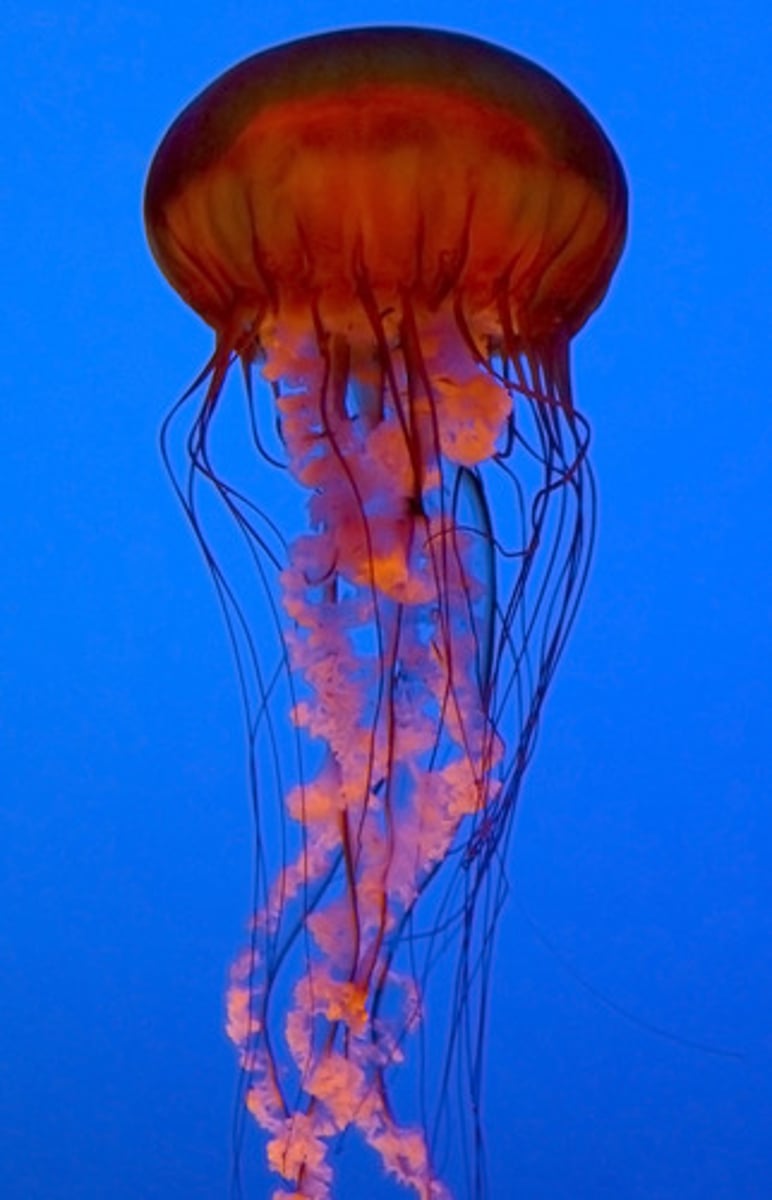Chapter 42 - Animal Evolution: Introduction to the Metazoans and Eumetazoans
1/16
There's no tags or description
Looks like no tags are added yet.
Name | Mastery | Learn | Test | Matching | Spaced |
|---|
No study sessions yet.
17 Terms
metazoa
multicellular animals
sponge characteristics
most basal metazoans
- Sponge bodies lack tissues and guts but have skeletal support
- Sponges are chemically exotic
- Most sponges are marine, a few percent of species are fresh water
- Habits include filter feeding, sex, and a larval stage
parazoans
Sponge bodies lack organized tissues and guts
- multiple cell types scattered throughout a sponge body
Mostly marine with a few freshwater species
Suspension feeders
Benthic (bottom-dwelling)
Specialized cell types (food collection, skeletal secretion, etc.)
Lack organized tissues
They come in a wide variety of body forms
- Some are vase-shaped & hollow in the center
- Some are full of chambers and passages
- Fans, globes, etc.
choanocytes
flagellated collar cells, generate a water current through the sponge and ingest suspended food
what are sponge larvae
blastulae that either drift away to settle (recruit) somewhere nearby or are retained in the parent
chemically exotic
- Chemicals aid in competitive interactions
- Defend against predators and competitors
- Provide natural pharmaceuticals
Sponges are loosely organized which means....
Cell suspensions can reassemble into functional sponge bodies .....(over and over and over again)!
what are sponge skeletons made of
collagen and/or mineralized spicules
Eumetazoa
animals with true tissues
- Tissues arise from cell lines that differentiate early in development, in the blastula or gastrula stage
diploblast structure
have an ectoderm and endoderm, with gelatinous material between.

ectoderm
outermost tissue layer
Forms the skin and nervous system
endoderm
innermost tissue layer
Formed during gastrulation
Forms the gut
radial symmetry
- Many planes of symmetry
- Top and bottom
- Like a flower pot

bilateral symmetry
- One plane of symmetry
- Left and right side
- Top and bottom
- Front and back ends
- Like a car

characteristics of radially symmetrical animals
• Radially symmetrical animals are usually attached to a surface, or they float
• They are equally likely to encounter food, predators, etc. from any direction
• They typically have a diffuse nerve net that intercepts info from all directions
• No central nervous system
Characteristics of Cnidaria
• Diploblastic
• Radially Symmetric
• Tentacles around mouth for catching prey
• Tentacles have cnidocytes (stinging cells)
• Blind Gut (single mouth/anus)
• A species can have a polyp stage, medusa stage, or both
• Solitary or colonial

Ctenophora characteristics
• Diploblastic and radially symmetrical, like the Cnidaria
• Pelagic, marine
• Predators; most catch prey with sticky tentacles that hang down under the 'umbrella' body.
• This orientation allows for effective prey capture with little effort.
• Swim by beating rows of cilia
